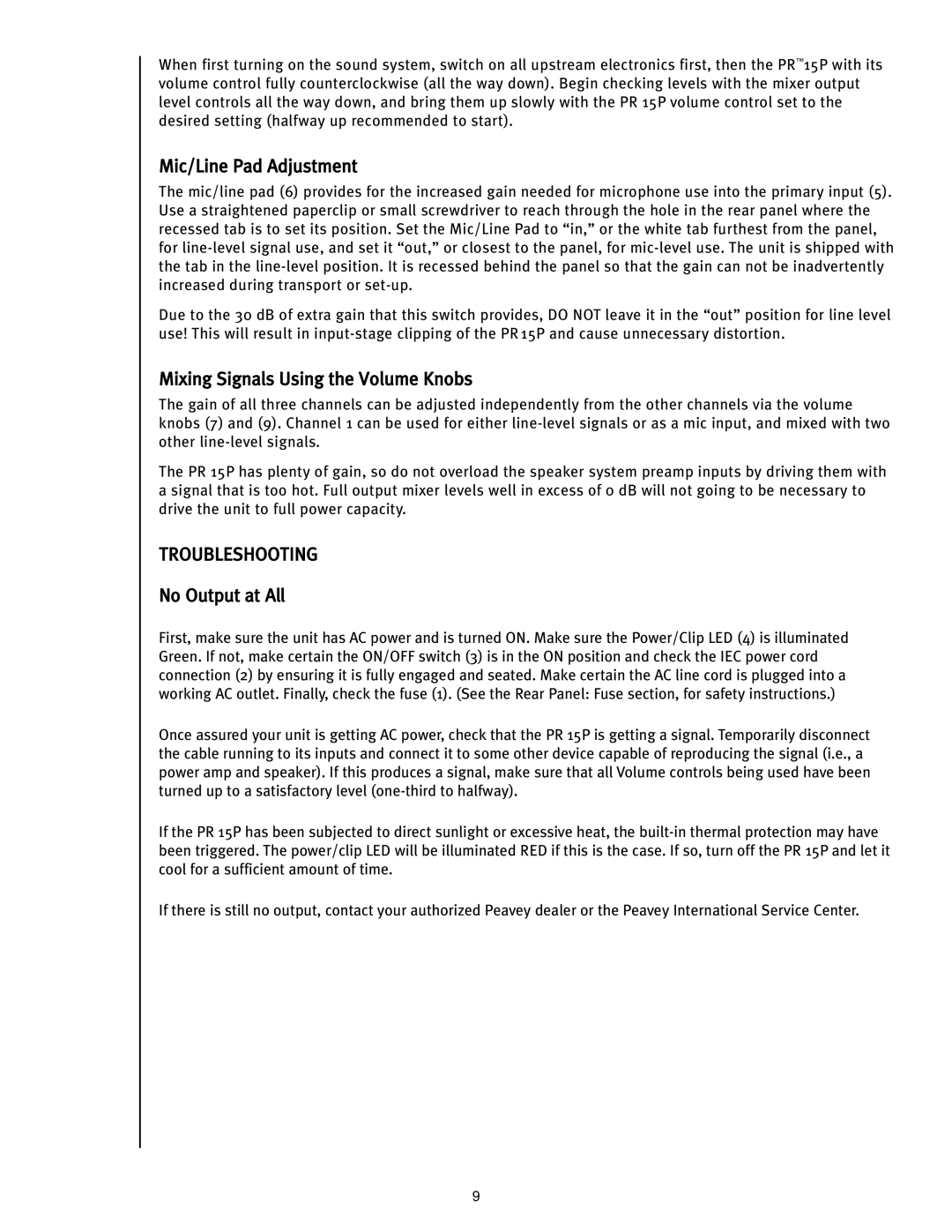PR 15P specifications
The Peavey PR 15P is a popular powered loudspeaker designed for musicians, DJs, and sound engineers seeking a versatile and robust solution for live sound applications. With its impressive audio performance and durable construction, the PR 15P stands out as a reliable choice for both professional and amateur use.One of the key features of the PR 15P is its 15-inch heavy-duty woofer that provides deep, punchy bass response. Coupled with a 1-inch compression driver and a high-frequency horn, the speaker delivers clear and articulate high frequencies, ensuring a balanced sound across the entire frequency range. The combination of these components allows the PR 15P to produce a powerful output of up to 1000 watts peak power, making it suitable for large venues or outdoor events.
The PR 15P is equipped with a built-in class D amplifier, which not only provides efficient power but also contributes to a lightweight design. This amplification technology allows the speaker to deliver exceptional sound quality without the bulkiness often associated with traditional amplifiers. The enclosure is constructed from durable polypropylene, ensuring the speaker can withstand the rigors of transport and frequent use.
In terms of connectivity, the PR 15P offers versatile options that include XLR and 1/4-inch inputs, allowing users to connect a variety of audio sources such as mixers, microphones, or instruments. The presence of a built-in mixer with a 3-channel configuration adds to its functionality, making it an all-in-one solution for smaller setups. Additionally, a simple adjustable EQ allows users to tailor the sound according to their specific environment or preferences.
The design of the Peavey PR 15P also features a lightweight construction and ergonomically placed handles, which facilitate easy transport and setup. The speaker can be used in multiple configurations, including as a main PA speaker, a floor monitor, or even mounted on a standard speaker stand.
Overall, the Peavey PR 15P combines powerful performance, versatility, and portability, making it an ideal choice for a wide range of sound reinforcement applications. Its robust features and technologies ensure that users can achieve professional-grade sound quality, whether in a club, at a concert, or during a corporate event. The PR 15P truly exemplifies Peavey’s commitment to delivering high-quality audio solutions for both performers and audiences alike.
